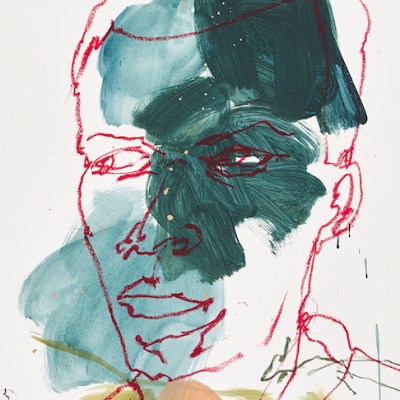South African stalwart Goodman Gallery opened its Cork Street premises in London with a screening of Kudzanai Chiurai’s film, We Live in Silence. Here, the Zimbabwean artist talks to Apollo about the ideas at play in the film.
What does it mean to show We Live in Silence in London?
It resonated especially to show it here with its new additions – archival footage I’ve added, which, in a way, connects the history of Zimbabwe with that of the UK. This is footage is from a five-minute film – a clip that would have been played before a feature screening – that I found in the Pathé British Film archives. It shows Zimbabwe, Rhodesia at the time, in the 1960s and ’70s, after the unilateral declaration of independence from Britain by Ian Smith. And I can’t not think of the whole Brexit thing, in relation to declarations of independence.
But then it was also important that the viewer doesn’t see the archive footage as somehow outside the film, as independent material – the history it shows is essential to the fiction that’s presented.
The central irony of the film arises from casting a black female character in the role of a white supremacist. How do you resolve this?
That’s a really hard question. In one sense, yes, there’s the irony of a black female actor playing a white aristocrat – but it’s also true that the thinking process of this central character is built on capital. And when you look at Zimbabwe, or at South Africa where I’ve largely grown up, capital is an essential part of how we define our interactions – black aristocrats, and black industrialists, have been an essential part of how we’ve imagined the postcolonial.
There’s also the question of appropriation from the source material, Med Hondo’s Soleil Ô (Oh Sun!; 1970). In that film, Hondo looks at the first generation of African migrants to Europe. [In reusing that script,] I’m working with the experience of this generation as source material, so what I am then doing with it is about a question of blurring that line between fact and fiction.
In trying to reimagine the postcolonial you’ve often spoken in the past of the concept of ‘liberated zones’. Can you tell me how this idea is at play in the film?
In places like Guinea-Bissau and Angola in the 1960s, these liberated zones were essentially front-line points for resistance to colonial rule and white nationalism. They were spaces that were egalitarian and had a new model for thinking, a new way to serve communities. By doing so, they became spaces that were targeted purposefully by colonial governments – the intention was to break them apart and close them down, because once they set in they spread, and once they spread they established themselves sufficiently to declare independence.
What I found really interesting was how that then relates to the idea of synchronised meaning. In the film, the central character argues that we must give the same meaning to everything, for the sake of the economy – and if you consider money, and think of its function, the stock market has to mean the same thing in Harare or Johannesburg as it does in London to properly function. But if you resist that, as happened in these liberated zones, you then have a clash of systems.
Part of what the film was trying to ask is in some way to challenge this idea of synchronicity – to ask the question of how can you construct, in art or language, a plural state of being.
How does the idea of plurality inform some of your other works?
Library of Things We Forgot to Remember [an archive of materials, from vinyl to posters and paintings, drawn from African private collections; a version of it was recently installed at Goodman in Johannesburg] is a work that I consider to be itself a form of liberated zone. It functions independently – I find a different librarian every time there’s an iteration of it, and different people see the process of cataloguing differently. Some look at it visually, and some aurally – and so different librarians bring different things to my attention.
One of the ways I’ve come to consider these archival materials is as people’s confessions; historical voices bearing witness to what they have done. I wonder, if I’d been a priest listening to people’s confessions, would I want to remember everything? Are there things I’d want to change? And in the way that these materials are brought to light and displayed, they are inevitably changed – so again, it creates these tensions between truth and fiction.
The opening of Goodman Gallery in London is just one example of how contemporary African art has a broader global reach than ever before. How do you see your position as an African artist working today?
It comes back to this question of plurality. If you consider that I am local to Harare, I’m still participating globally – even when I’m not physically there, I’m still present around the world through the work that I’ve made. Artists of older generations, like George Pemba or Dumile Feni [South African painters who spent most of their careers in the West] just didn’t have the same opportunities. Whereas I can now be local in four or five countries at once.
We Live in Silence was shown at Goodman Gallery, London, on 3 October.







